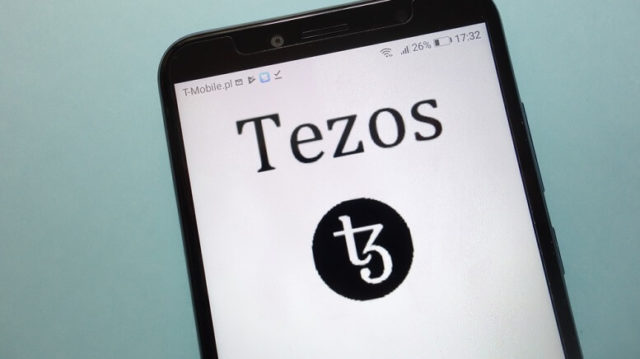Over the past decade, blockchain technology has risen dramatically in scope, penetrating the mainstream lens as a novel alternative to storing one’s assets.
This technology has a wide range of applications in numerous sectors, ranging from legal to healthcare. However, one of the fields where blockchain has made a resounding impact is in its relation to non-fungible tokens, or NFTs.
NFTs are individualized digital assets run on a blockchain platform that is unique and immutable. NFTs can represent anything in the real world, such as digital art, videos, and in-game items.
Their ability to make a profit and be resold has made them highly sought-after by people of all walks of life, with some studies saying that this industry is expected to grow to a $13.7 billion industry by 2027. Even projects like NFT Profit have been created to help people to make the most of this emerging technology.
Many blockchains support the creation and exchange of NFTs. In this article, we’ll take a look at the top blockchains for NFTs, based on a few factors.
What to Consider Before Choosing a Blockchain for NFTs
When choosing a blockchain for NFTs, there are a few key factors to consider:
- Network size: Investing in a blockchain with a large network size will ensure that your NFTs have a large pool of potential buyers.
- Transaction fees: The transaction fees (or gas fees) of the blockchain is something to consider since they can take a percentage of your NFT’s sale price.
- Accessibility: You’ll want to be able to easily create and sell your NFTs with other holders. If owning an NFT requires multiple, complex steps, it may not draw in such a large audience.
- Community perception: A blockchain with a supportive and growing community can give you a glimpse of the future success of the platform.
- Market volume: The market volume is a good metric to consider since it can give you an idea of the liquidity of the NFTs on the blockchain.
Now that we know what to look for, let’s take a look at some of the top blockchains for NFTs.
Ethereum
Ethereum is hands down one of the most popular blockchains for NFTs. It was the first blockchain to introduce the concept of smart contracts, which allows for the creation of decentralized applications (dApps). These dApps can be used for a wide range of purposes, including the creation and exchange of NFTs.
While Ethereum still crests at the number one spot in terms of popularity, it has been steadily losing market share to newer blockchains. From the increase in competition to the blockchain’s underlying high gas fees and energy consumption, other newer blockchains are beginning to chip away at Ethereum’s dominant market share. Nevertheless, Ethereum still boasts a large community of developers that’ll take tremendous effort to topple. With some of the fastest transaction times, Ethereum is one of the top blockchains for NFTs.
Solana
Solana is an alternative blockchain that offers virtually similar features to Ethereum with much lower transaction fees. This blockchain is also known to be one of the fastest on the market, with the ability to validate over 65,000 transactions per second, which is 4000x faster than the Ethereum TPS.
Salana distinguishes itself from its competitors by having both proof-of-stake and proof-of-history protocols, incentivizing blockchain validators who stake for rewards while simultaneously keeping the blockchain secure and fast. While it lags behind Ethereum in terms of network size and appeal, it has been growing steadily and boasts a growing NFT community.
Tezos
Tezos is another blockchain platform that has been gaining a lot of traction in recent years. Like Ethereum, it supports smart contracts and dApps development. However, Tezos distinguishes itself with its on-chain governance model that allows stakeholders to vote on protocol upgrades.
On top of that, Tezos is a blockchain with a low carbon footprint, meaning that it doesn’t require massive amounts of energy to power its network as Ethereum does. In fact, it’s estimated that Ethereum’s carbon footprint is about two million times more than Tezos’s when measured on a one-to-one scale. While it has a slightly higher gas fee than Solana (but less than Ethereum), it’s much more environmentally friendly.
Cardano
While Cardano didn’t support NFTs during its inception, constant updates have brought it to become one of the most popular blockchains for NFTs. It’s a proof-of-stake blockchain that supports smart contracts, dApps development, and is powered by Ada, its native cryptocurrency.
One of the main selling points of Cardano is that, unlike Ethereum, it’s a true proof-of-stake network. That means that anyone who owns Ada can stake their coins to help validate transactions and earn passively through staking rewards. And since Cardano doesn’t require tremendous amounts of energy to power its network, it’s a much more sustainable option than Ethereum.
Polygon
Polygon is a Layer 2 scaling solution that runs on top of Ethereum, allowing for near-instant transaction speeds and low gas fees. It’s essentially a side-chain of the Ethereum Mainnet, allowing users to interact with the various dApps running on the platform without having to worry about network congestion.
One of the most exciting goals for Polygon is its intention to enable interoperability between Layer 1 and Layer 2 networks in the future. This can give rise to exciting, new use cases, including patching Ethereum’s scalability issues and simplifying the migration of existing Ethereum dApps over to Polygon.










